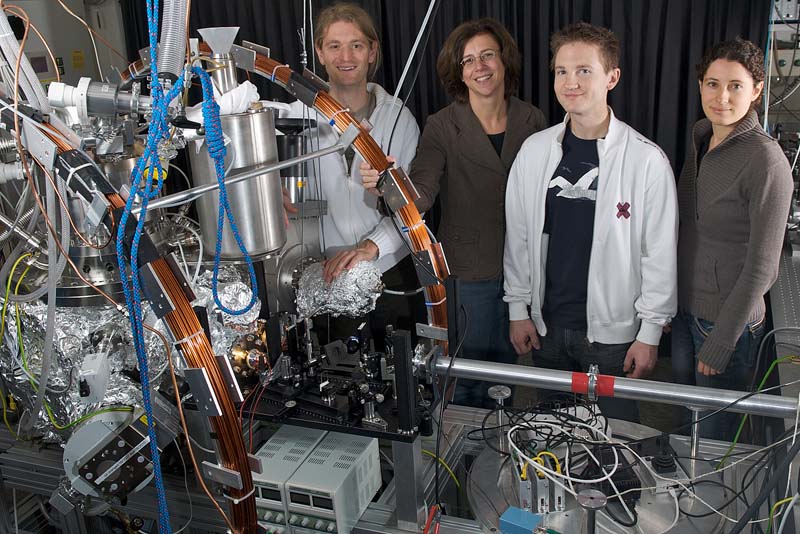Attoclock
Nov. 2011: Short movie portrait of the attoclock (German)
Prof. Ursula Keller erklärt das Prinzip der Attoclock
The attoclock is a powerful, new, and unconventional tool to study fundamental attosecond dynamics on an atomic scale. We established its potential by using the first attoclock to measure the tunneling delay time in laser-induced ionization of helium and argon atoms, with surprising results. Building on these first proof-of-principle measurements, I propose to amplify and expand this tool concept to explore the following key questions: How fast can light liberate electrons from a single atom, a single molecule, or a solid-state system? Related are more questions: How fast can an electron tunnel through a potential barrier? How fast is a multi-photon absorption process? How fast is single-photon photoemission? Many of these questions will undoubtedly spark more questions – revealing deeper and more detailed insights on the dynamics of some of the most fundamental and relevant optoelectronic processes.
There are still many unknown and unexplored areas here. Theory has failed to offer definitive answers. Simulations based on the exact time-dependent Schrödinger equation have not been possible in most cases. Therefore one uses approximations and simpler models to capture the essential physics. Such semi-classical models potentially will help to understand attosecond energy and charge transport in larger molecular systems. Indeed the attoclock provides a unique tool to explore different semi-classical models.
For example, the question of whether electron tunneling through an energetically forbidden region takes a finite time or is instantaneous has been subject to ongoing debate for the last sixty years. The tunnelling process, charge transfer, and energy transport all play key roles in electronics, energy conversion, chemical and biological reactions, and fundamental processes important for improved information, health, and energy technologies. We believe the attoclock can help refine and resolve key models for many of these important underlying attosecond processes.
